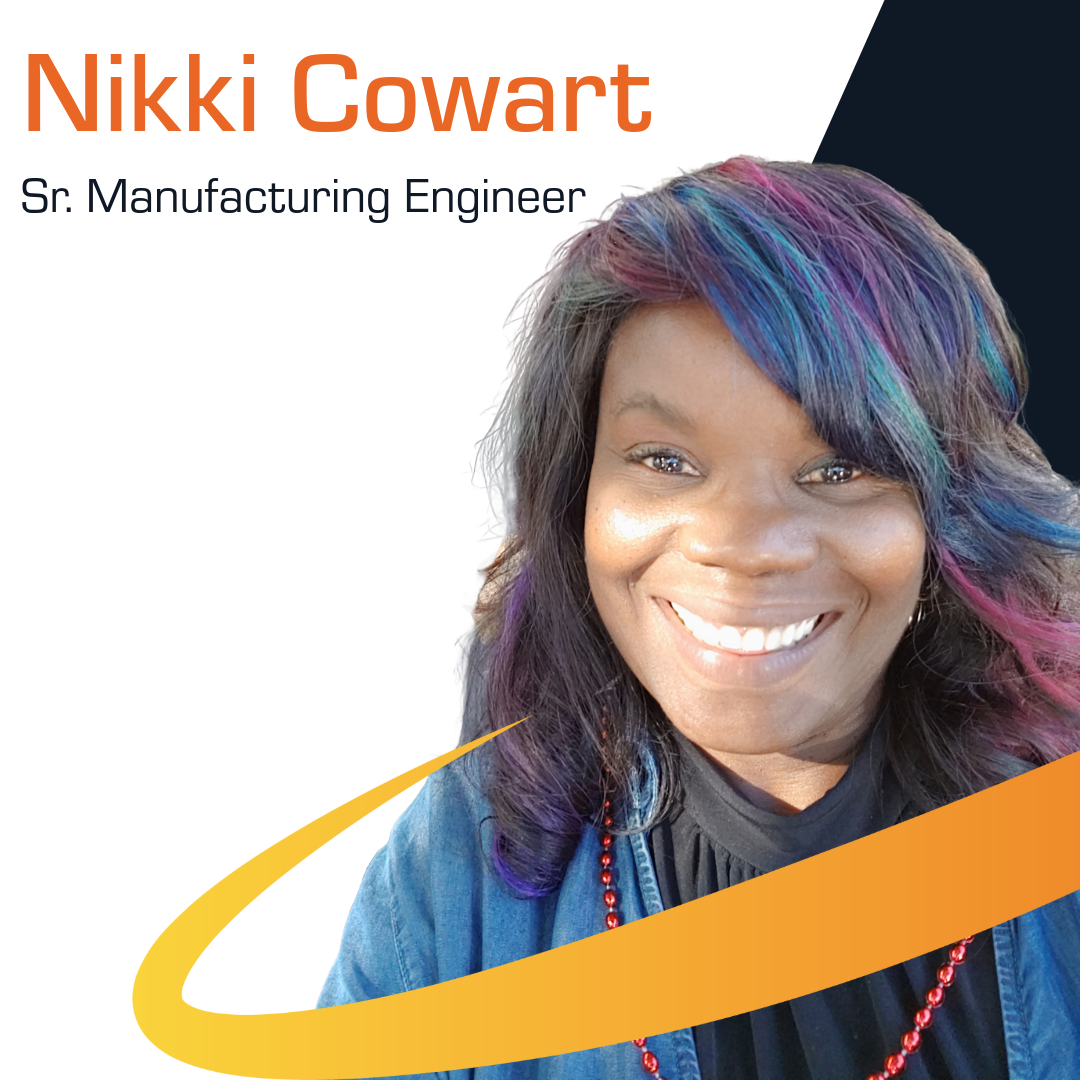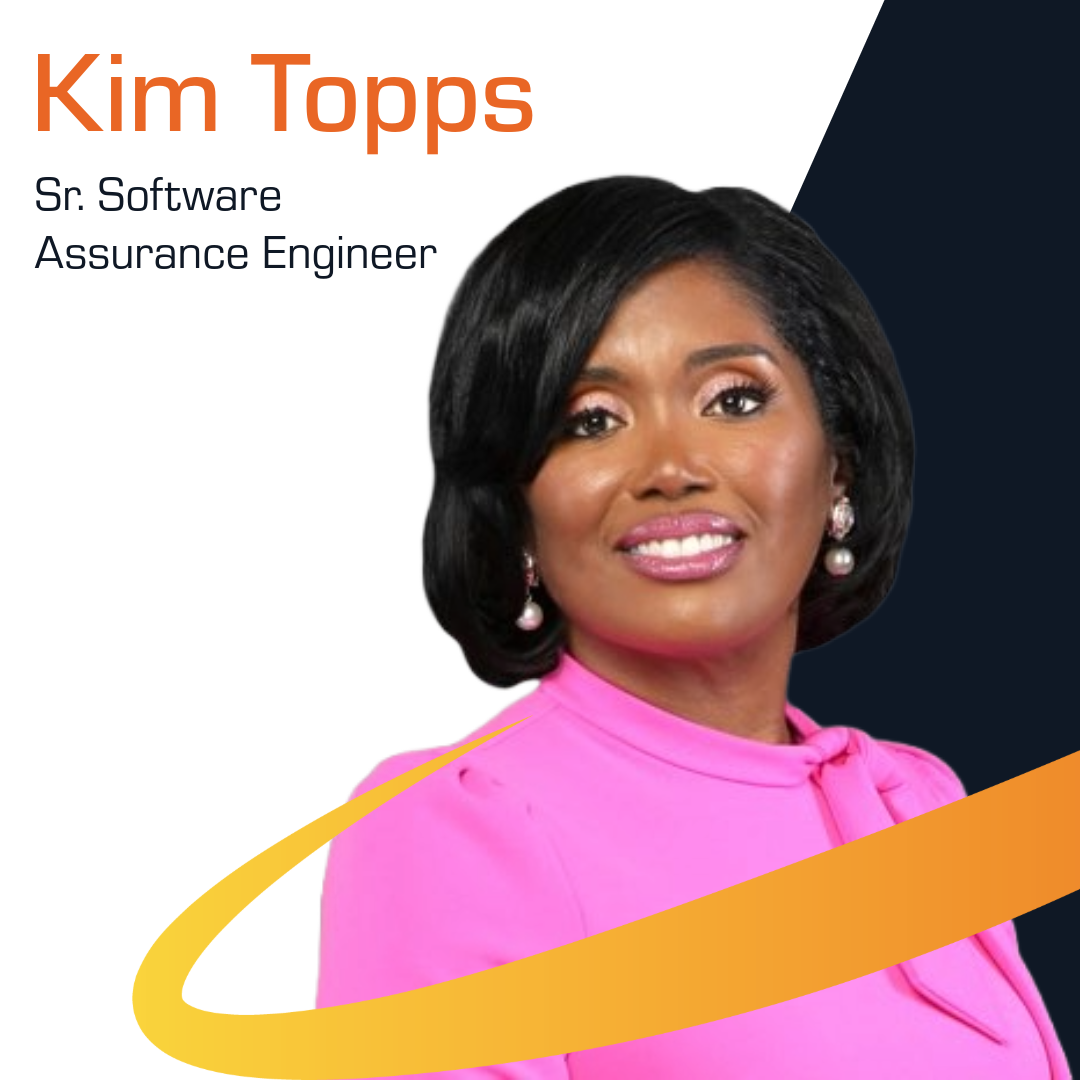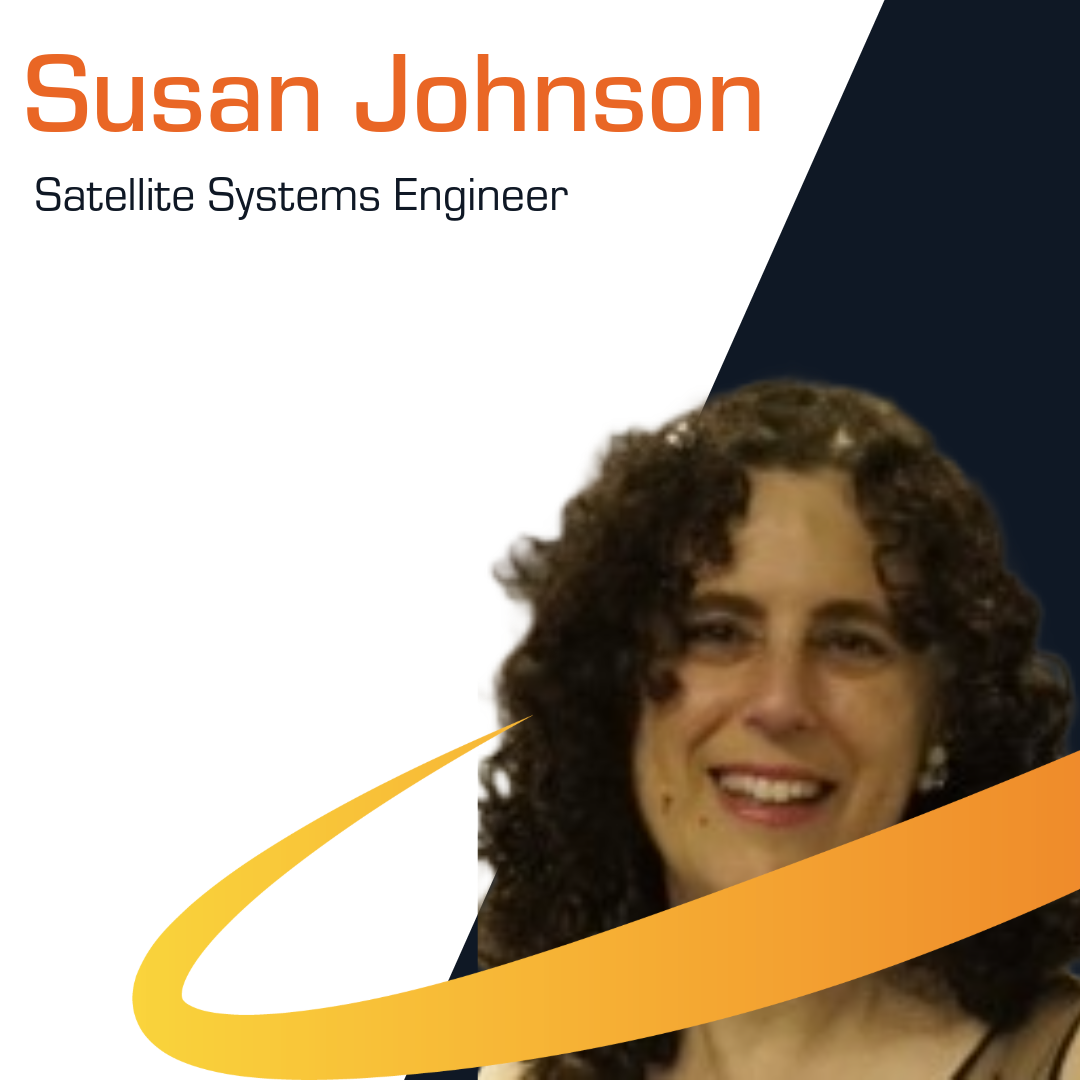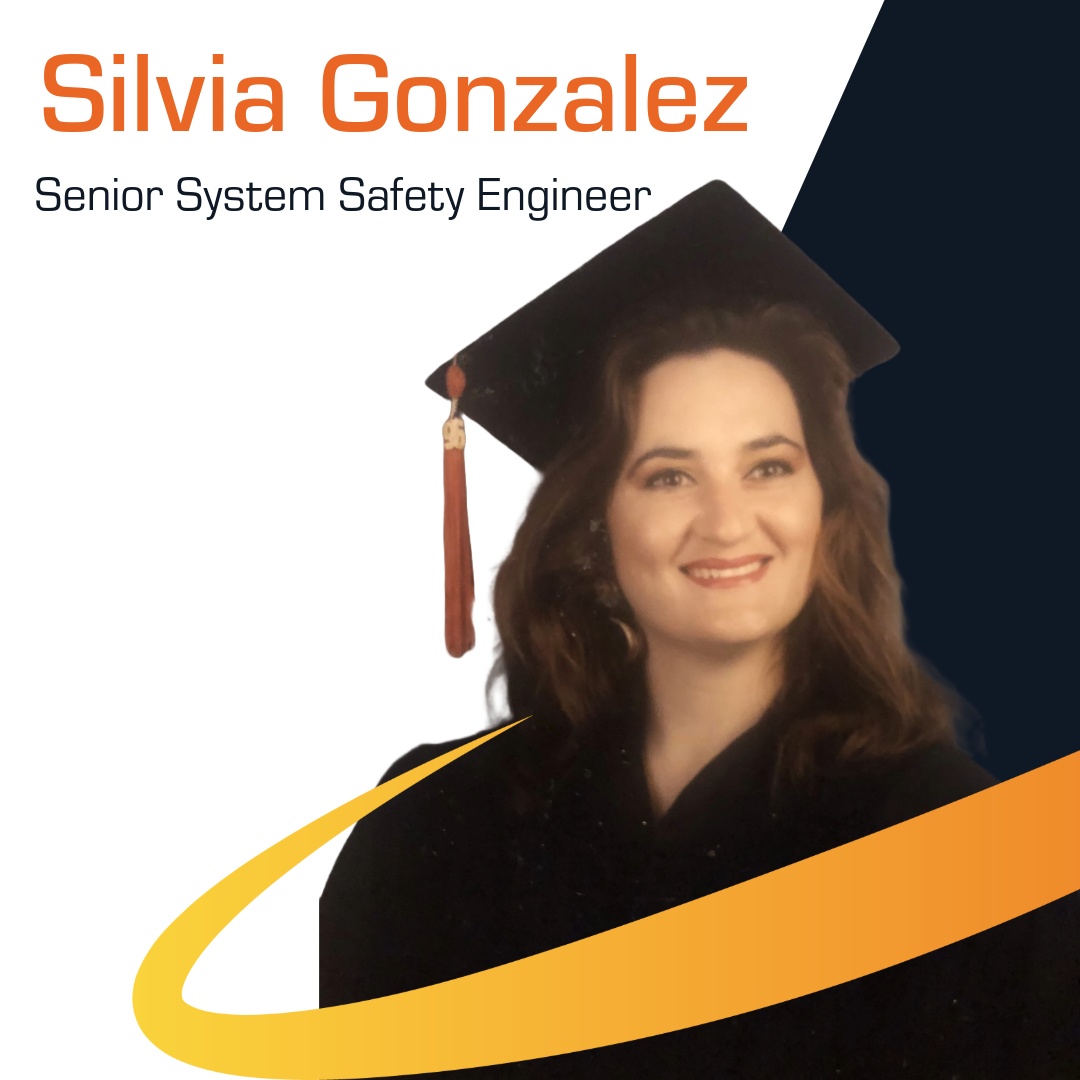Axient Corporate Overview
Discover our breakthrough solutions for mission success.
Learn More
At Axient, we are proud to celebrate the incredible achievements and contributions of our women engineers. This June 23, we are shining a spotlight on four remarkable women who exemplify excellence, innovation, and dedication in their fields. Meet Nikki Cowart, Kim Topps, Susan Johnson, and Silvia Gonzalez, and learn about their journeys, challenges, and triumphs in engineering.
 Nikki Cowart
Nikki Cowart
Nikki Cowart, a senior manufacturing engineer at Axient, said that her inspiration for becoming an engineer started as a child, when she liked to break and then attempt to fix things. Though she failed physics in high school, Nikki went on to earn degrees in Mechanical and Aerospace Engineering, Black Studies, and an MBA. She said, “I didn’t let failing physics stop me. I went to junior college, then transferred to CSU Long Beach and graduated with multiple degrees.”
Explaining Her Job to a Five-Year-Old:
“I help get people and stuff to space. I tell stories (presentations) about rockets going to space, I go on trips to where the rockets take off (visit launch sites), write reports, and attend meetings.”
Challenges and Overcoming Them:
“There are very few women in leadership positions. I gained experience and applied for a Lead Engineer position, and I got it.”
What She Enjoys Most About Working for Axient:
“I love working with various teams and sharing my knowledge and perspectives.”
Most Exciting Project:
“Working on the New Glenn BE-3U Engines and BE-4 Engines.”
Proudest Career Achievement:
“Becoming the Lead Manufacturing Engineer on the New Glenn BE-3U Engines and BE-4 Engines.”
Advice to Young Girls:
“Follow your dreams and never stop reaching for the stars. Math is just another language to learn.”
Significant Mentor:
“My grandmother, who lived to be 101, always said, ‘Put God first, and there is nothing you can’t achieve.'”
Launch She Wishes to Witness:
“The Apollo launch to the Moon, to see the first humans walk on the moon.”

Kim Topps, a senior software assurance engineer at Axient, had a similar early interest in engineering. She said, “my mother is a retired Physics teacher. I had a brother first and knew at age 4 or 5 years old that I would be an engineer. My brother and I could repair TVs and radios at ages 4 and 5.”
Challenges and Overcoming Them:
“The most challenging aspect as a woman engineer is getting your ideas, concepts, designs and feedback to be accepted.”
What She Enjoys Most About Working for Axient:
“The diversity in the workforce and the amazing work we do for NASA.”
Most Exciting Project:
“Working on Artemis, developing the next set of space suits for Moon and Mars missions.”
Proudest Career Achievement:
“I am most proud of my design of the Electrical Power System – Plasma Contractor Unit design. I was able to collaborate across multiple centers to develop, design and execute this design that is still in space with no issues.”
Advice to Young Girls:
“Don’t be afraid to be the only girl in the class. Take all the math and science you can and never stop learning. You deserve to be in the room, in the lab, and in the board room making decisions and developing the next technology.”
Significant Mentors:
“My mother, my aunt, and my engineering mentor, Cynthia Oliver Coleman, PE.”
Biggest Misconception About Women in Engineering:
“That women aren’t good at engineering. Women on design and leadership teams are amazing!”
Hobbies and Interests:
“I love volunteering and helping others, writing, reading, shopping, traveling and cooking/baking.”
Alternative Job Title:
“We are the software police.”

Susan Johnson, a satellite systems engineer at Axient, said her inspiration to become an engineer came when she realized being an artist wasn’t the right fit. After taking an AP chemistry exam, she realized she needed structure in her schedule, felt driven to solve problems, and loved math and science.
What She Enjoys Most About Working for Axient:
“Being part of a team that values my work and collaborates daily.”
Most Exciting Project:
“Working on the NGG space program to relay critical information for national defense and environmental conditions.”
Happiest Moments:
“I’m happiest when I feel valued and that I can make a difference in other people’s lives and to our team.”
Proudest Career Achievement:
“When I worked in the satellite factory, there was a poorly written power supply requirement that no one seemed to fully understand, and it didn’t get tested by the vendor properly. Since the power supplies were already purchased, it was too late to ask the vendor to test them, so we had to find a way to verify them at the system level. I persuaded one of the power supply engineers to help me set up test equipment to verify the requirement, and together, we set up a test in the lab and verified the performance. This could have been fatal to mission if it hadn’t worked. The satellite performed very well once in orbit.
“Then, a similar thing happened on a GPS program where the vendor didn’t test the power supplies for one of the requirements, and the GPS receiver expert expressed gratitude to me for catching the error. I assisted him with verifying the requirement. The customer was impressed.”
Hobbies and Interests:
“Walking my dog, painting, bicycling, hiking, swimming, reading, and gardening.”
Sentimental Attachment:
“My GOES satellite watch, a reminder of my work on the weather satellite program. NASA and NOAA provide the GOES weather satellite to track environmental conditions such as rain, as well as search and rescue capability. I learned a lot on that program.”
Challenges and Overcoming Them:
“I went to UCLA’s School of Electrical Engineering but felt that they didn’t provide much in the way of hands-on experience. Despite having good grades, my friends and I struggled in the lab courses because there were no manuals telling us how to use the equipment!
“The best thing I did was to become a summer intern, where people mentored me in how to use test equipment. I was fascinated by RF / microwave electronics. I could imagine the waves traveling in three dimensions down a waveguide or two dimensions down a microstrip circuit.
“I was hired to a full-time position in the late 80s. However, no one greeted me on my first day of the job or gave me an assignment. Management didn’t include me in their team discussions. I was miserable working there and wanted to quit, but I decided to put my best foot forward and be as productive as possible. I found a team lead who I liked and asked him to give me an assignment. He said that he had no budget, but I asked how much time he could let me work on a project for him and told him I’d complete the project within that time or else not charge him at all. He gave me the project. I had no idea at first how to build the test circuit, but with the help of a mentor down the hall, I successfully built and tested it. This led to more projects where I successfully tested RF devices for research purposes. I was proud that our team won an innovation award for this effort.”

Silvia Gonzalez was recently promoted to senior system safety engineer at Axient said that her inspiration for becoming an engineer stemmed from wanting to make her family proud, and with a little encouragement from a math teacher, she was drawn to engineering. She said, “I used to live close to the Los Angeles Airport, and I could see the planes close to landing. I was so amazed by them and wanted to learn more about how they worked.”
Explaining Her Job to a Five-Year-Old:
“I would tell them that I am responsible for helping the soldiers know where they are and finding their way home safely.”
Challenges and Overcoming Them:
“In my culture, there was no representation of women taking on stereotypically male-dominated careers. Because of these long-held stereotypes, my mother didn’t think that it was realistic that I became an engineer. It felt like she didn’t believe I could handle pursuing my dreams. Despite this, I still wanted to be an engineer, and, in my heart, I felt that I could do it. In school, I was almost always the only woman in the class. The teachers, who were all men, would be more critical of my work compared to my male counterparts. I learned to overcome these challenges by persisting in my goals and continuing to work hard to excel in my career. I would become the first in my family of 10 siblings to obtain a higher degree, and it is still my greatest accomplishment.”
What She Enjoys Most About Working for Axient:
“The people that I work with. The confidence my manager and vice president have given me is priceless! It empowers me to do the best I can every day and makes me feel like I can achieve anything I need to do.”
Proudest Career Achievement:
“I was the Cargo Integration System Safety lead for the Space Shuttle Program. I felt honored to be at the Flight Readiness Reviews for each Space Shuttle flight I worked on.”
Advice to Young Girls:
“I would give young girls the advice to follow their dreams and not to give up, despite whatever stereotypes may be challenging them! It took me 12 years after high school to get my engineering degree due to so many obstacles I had to overcome, but I made it through with determination and perseverance. Failure is not the end of the world if you stand up each time you fall. It is achievable and well worth it if you try!”
Biggest Misconception About Women in Engineering:
“That women are not strong enough, or smart enough, for the job. Many people still believe in gender stereotypes and previously throughout my career I struggled with being overlooked for promotions and being treated differently than the males I worked with.”
Sentimental Object:
“My Space Shuttle model. Since I was a little girl, I was amazed by the Space Shuttle and when I graduated from school it was a dream come true to have worked for the Space Shuttle Program. I still feel like I was an important part of the Space Shuttle Program.”
Favorite Story from Engineering Journey:
“I love to talk about the time I visited the Mission Support Room in Houston (which was amazing!), and also about the time that I was one of the engineers listening in the mission support room in Downey, California when one of the astronaut’s did a spacewalk to fix a payload.”
At Axient, we are committed to accelerating possible by fostering a diverse and inclusive environment where all engineers can thrive. We celebrate the achievements of Nikki, Kim, Susan, and Silvia, and look forward to the continued impact they will make in the world of engineering. Follow us on our journey as we support and elevate the brilliant women engineers who are shaping the future.
*These interviews have been edited for length and clarity.